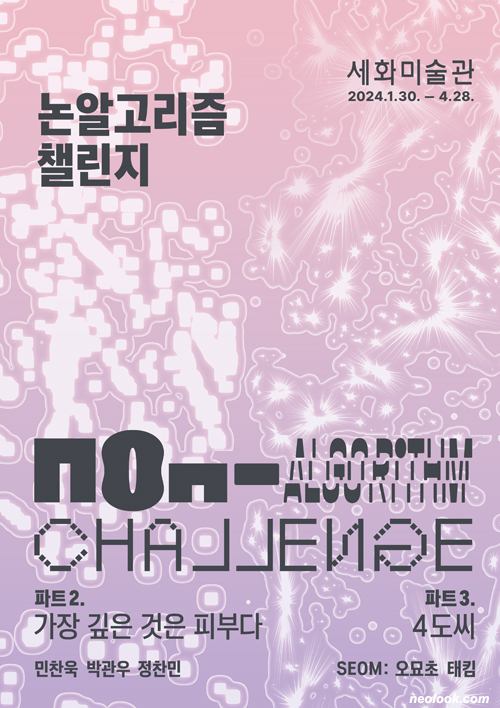- ● homepage
- ● archives
- ● books
- ● restoration
- ● post board
- ■ neo's search
- ■ about us
- ■ 게재방법 안내
- 개인정보처리방침
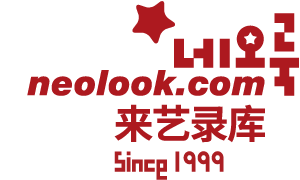
- [email protected]
- Tel. 02_335_7922
- Fax. 02_335_7929
- 10:00am~04:30pm
- 월요일~금요일

논알고리즘 챌린지 2부. 가장 깊은 것은 피부다
Non-Algorithm Challenge Part 2. Skin, the Deepest Part
민찬욱_박관우_정찬민展 2024_0130 ▶ 2024_0428 / 월요일 휴관
별도의 초대일시가 없습니다.
주최 / 세화미술관 후원 / 흥국생명
관람료 / 성인_5,000원 / 청소년_4,000원 / 단체 20인 이상_할인가 적용
관람시간 / 10:00am~06:00pm / 월요일 휴관
세화미술관 SEHWA MUSEUM OF ART 서울 종로구 새문안로 68 흥국생명빌딩 3층 Tel. +82.(0)2.2002.7789 www.sehwamuseum.org @sehwamoa
'논알고리즘 챌린지' 프로젝트 기획글 ● 통제 불가능한 속도로 발전하고 있는 인공지능 기술은 인간과의 경계를 점점 더 해체하고 있습니다. 인간을 대신하는 인공지능의 영역이 점차 확대될수록 마주하는 불안은 인간의 존재와 역할에 대해 다시금 고민하게 합니다. ● 이번 '논알고리즘 챌린지'에서 '논알고리즘'1)은 단계적으로 명확하게 문제를 해결하는 알고리즘과 반대되는 개념입니다. 인간은 사회적으로 타인과 상호작용하며 유기적으로 작동하는 매우 유연한 사고체계를 가지고 있습니다. 정형화되지 않고 임의적인 방법을 통해 문제를 해결하는 논알고리즘은 보통 창의성, 직관, 직감, 경험 등을 기반으로 한 결정이나 행동으로 나타나는데, 이는 고도의 인간 사고와 매우 유사한 체계이기도 합니다.
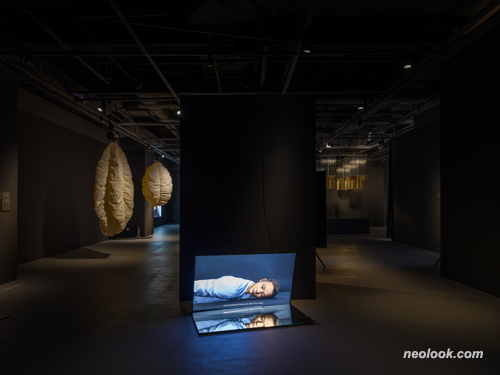
- 민찬욱_논알고리즘 챌린지 2부. 가장 깊은 것은 피부다展_세화미술관_2024
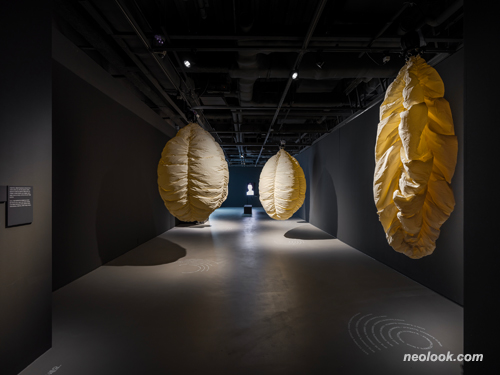
- 정찬민_논알고리즘 챌린지 2부. 가장 깊은 것은 피부다展_세화미술관_2024
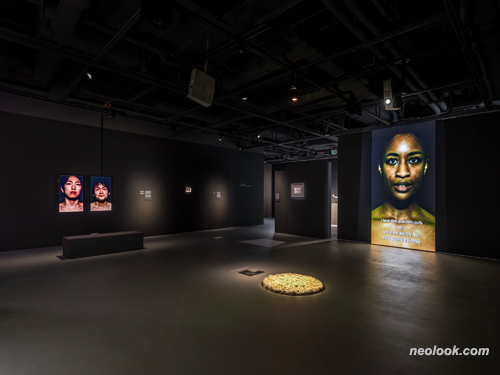
- 박관우_논알고리즘 챌린지 2부. 가장 깊은 것은 피부다展_세화미술관_2024
'논알고리즘 챌린지'는 이러한 인공지능 시대 인간과 비인간의 존재와 관계 속에서 '인간다움'에 대해 다각적으로 사유해 보는 3부작 기획전시 프로젝트입니다. ● 첫 번째 전시 《귀맞춤》은 인간의 비정형적인 사고의 근간인 '감각'에 대한 이야기입니다. 시각중심주의에서 체감하기 어려웠던 인간의 '청각'을 자각하기 위한 실험의 장으로써 소리를 통해 우리의 존재 자체를 감각해보고자 합니다. ● 두 번째 전시 《가장 깊은 것은 피부다》는 '신체'에 대한 이야기입니다. 디지털 환경에서 점차 축소되는 신체적 체험, 몸을 기계로 바꾸어 영생의 꿈을 이루고자 하는 인류의 욕망을 바라보며 살아있음에 대한 정의는 무엇인지 고민해 보고자 합니다. ● 세 번째 전시 《4도씨》는 '기억'에 대한 이야기입니다. 기억이 가진 모순과 망각, 비약과 도약 등 비합리적, 비결정적 작동 방식은 알고리즘과 다른 인간다움을 사유하게 합니다. 기억이 갖는 논알고리즘적 측면을 통해 모든 것을 모사하는 이 시대를 재발견하고자 합니다. ● 불쾌한 골짜기를 지나 맞이하게 될 새로운 패러다임의 시작이 불확실하고 두려운 미래가 아닌 연대와 공감의 미래가 되길 기대하며, '논알고리즘 챌린지'를 통해 흐릿하게 가려진 인간 존재에 대해 사유함으로써 미래의 무한한 가능성을 발견할 수 있길 바랍니다.
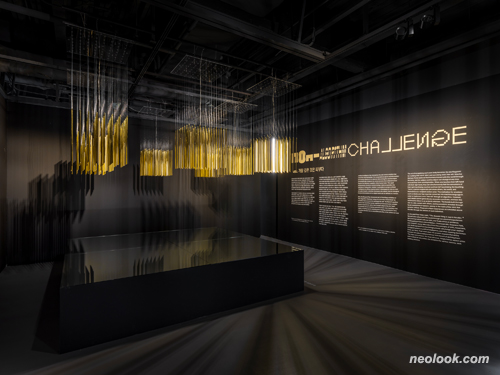
- 민찬욱_디지털 자아는 스스로 죽을 수 있는가_황동, LED, 와이어, 거울, 전자기기 및 부품_300×300×300cm_2023
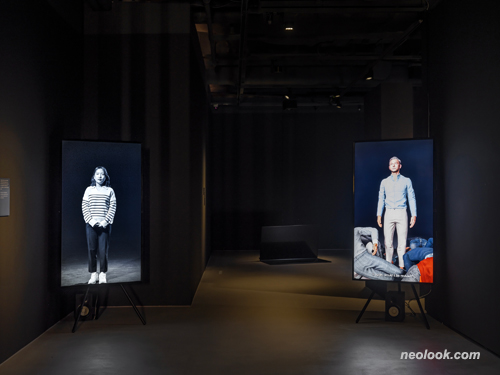
- 민찬욱_디지털 휴먼은 무엇인가?_2채널 영상_00:55:00_2022
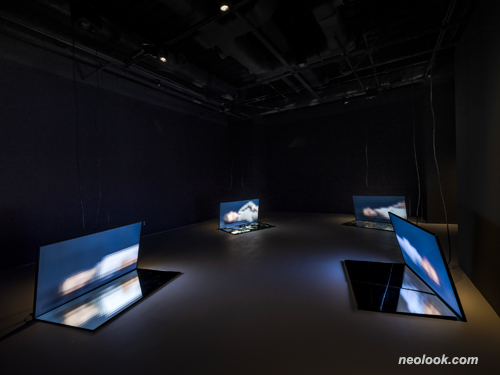
- 민찬욱_죽은자의 대화_비디오 설치, 가변설치_00:22:00_2024
'논알고리즘 챌린지' 2부 《가장 깊은 것은 피부다》 기획글 ● 인공지능은 인간이 온전히 해석할 수 없는 유일한 창조물로 부상했다. 확률적으로 정답에 가장 가까운 규칙을 도출하기 위한 연산 속도와 정보 처리양이 인간의 뇌로 그 과정을 유추할 수 없는 단계에 이르렀기 때문이다. 이같이 급속한 과학 기술의 발전은, 인공지능이 도구의 역할을 이탈하여 '자아'를 가지게 될 때 이들을 생명체로 받아들일 수 있을지 혹은 생물학적 신체를 벗어나 디지털 세계로 이전한 인간의 자아를 사람으로 지각할 수 있을지 '살아있음'에 대한 정의를 질문하게 만든다. ● '논알고리즘 챌린지'의 두 번째 전시 《가장 깊은 것은 피부다》는 세계와 자아를 연결하는 매개체인 사람의 '신체'를 주제로 한다. 인지과학 분야에서는 인간의 인지 과정이 '뇌'의 단일한 판단이 아닌 신체를 통해 나타나는 복합적인 경험이라는 사실에 주목하고 있다. 가령 뜨거운 사물을 만졌을 때 손을 떼거나, 매캐한 먼지를 들이마실 때 눈물이 나고 재채기를 하는 행동은 인간이 의식적으로 판단하는 행동이 아닌, 중추 신경계가 신속히 반응하는 무조건 반사의 영역이다.
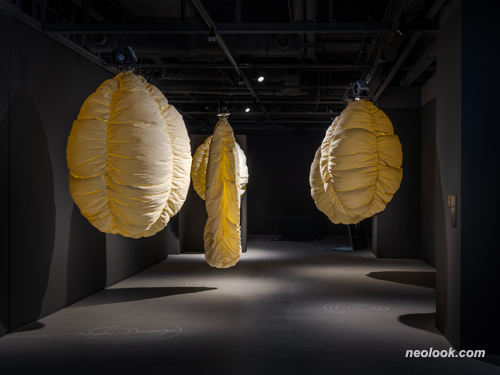
- 정찬민_이동부피_팬모터, PVC, 철제 조형물, 모터 제어 장치_200×90cm×5_2024
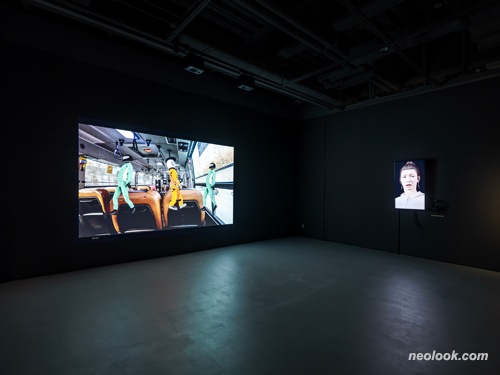
- 정찬민_멀미로운 생활_서민서, 이동
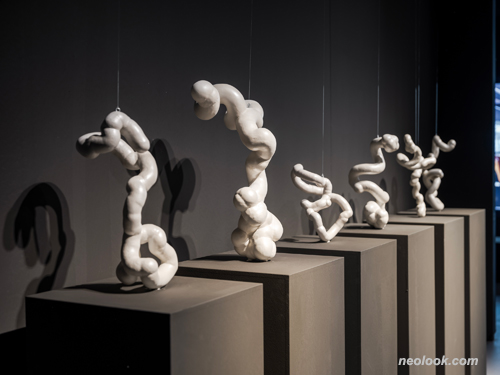
- 정찬민_현상된 움직임 2024ver_3D 프린트, ABS 필라멘트_2024
자신의 몸을 인식하는 행위는 곧 스스로가 '살아있다'는 사실을 자각하여 '자유의지'를 행하는 출발점이 된다. 모리스 메를로-퐁티는 인간이 세계와 몸을 매개로 상호작용하며, 감각하는 신체를 지녔기에 주체와 객체가 언제나 바뀔 수 있다고 보았다. 사람은 자신의 왼손을 오른손으로 건드릴 때, 만짐을 당하는 왼손과 만짐을 행하는 오른손의 감각을 동시에 느낄 수 있다. 즉 '몸'을 지닌 인간은 수용자이자 행위자로서 타자와 세계 그리고 자신을 유기적으로 인식한다는 것이다. 또한 인간의 '자유의지'를 알고리즘으로 구현하기 위해서는 욕망, 두려움 같은 감정에 대한 동기를 수치화해야 하는데 이 같은 욕구는 정확한 좌표를 생성할 수 없으며, 이 감정이 어떻게 행동으로 연결되는지도 미지의 영역이다. 타인과 살을 맞대며 쌓은 유대감, 표정이나 언술로 드러나는 감정은 고정값을 도출할 수 없는 마음의 영역이며 개개인의 살갗 위로 축적한 고유한 체험이다. ● "가장 깊은 것은 피부다."2) 라는 시인 폴 발레리의 말처럼, 우리는 피부로 느끼고 체화한 신체적 경험에서부터 타인과 세계를 지각하여 마침내 존재에 도달한다. 이번 전시의 참여 작가 민찬욱, 박관우, 정찬민은 생물학적 신체에서 비롯되는 탄생, 이동, 죽음이라는 개념이 디지털 휴먼 혹은 인공지능에 적용될 때 어떻게 변화할지, 그리고 인간의 몸이 어떠한 의미를 지닐 수 있을지에 주목한다. 이들의 작업은 인간을 정의하는 답을 제시하는 것이 아닌, 규정짓는 행위를 통해 파생되는 질문을 던진다. 각기 다른 이유로 전시장으로 발걸음 한 개개인이 그 답을 찾아가는 과정 속, 지극히 사적이고도 인간적인 모습이 있을 것이다. ■ 세화미술관
* 각주 1) 정확한 표현으로는 비결정론적 알고리즘으로 일반적인 결정론적 알고리즘과는 달리, 동일한 입력이 주어지더라도 매번 다른 과정을 거쳐 다른 결과를 도출하는 알고리즘을 의미한다. 2) "Ce qu'il y a de plus profond dans l'homme, c'est la peau.", P. Valéry, L'Idée fixe ou Deux hommes à la mer (1932), Paris, Gallimard, 1966. p.50.
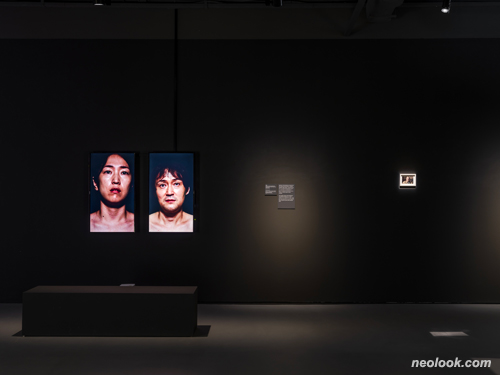
- 박관우_녹색등대_머스크 멜론_달콤한 꿈은 무엇으로 만들어지는가?(가네모토 하미와의 인터뷰&김상식과의 인터뷰)
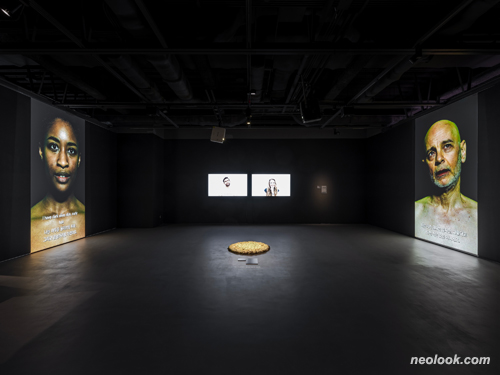
- 박관우_인간의 대화 1, 5 연작
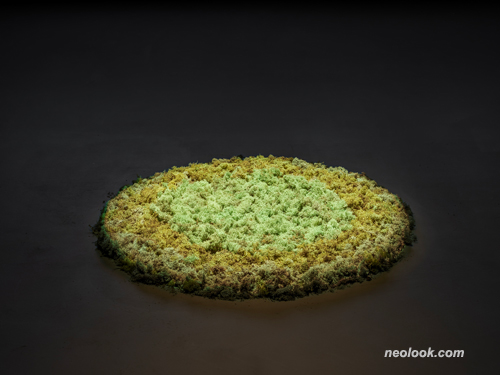
- 박관우_피부_특수조명, 렌즈, 인공잔디_100×100cm_2024

- 박관우_도슨트 프로그램_구성된 상황_2024
The development of Artificial Intelligence (AI) technology, which is advancing at an uncontrollable pace, is increasingly blurring the boundaries between humans and machines. As AI continues to encroach on domains previously reserved for humans, it gives rise to anxieties that force us to reconsider the existence and role of humanity. ● In this Non-Algorithm Challenge, a "nonalgorithm"1) refers to an approach or solution that is opposed to the typical algorithms used to solve specific problems step by step. Humans usually depend on a very flexible way of thinking that works organically and interacts with others socially. A non-algorithm, which solves problems in an atypical and arbitrary manner, produces a decision or action based on creativity, instinct, intuition, and experience. This is a system very similar to human thinking. ● The Non-Algorithm Challenge is a projected exhibition trilogy that seeks to provoke contemplation on the nature of humanity from various angles within the context of the relationship between humans and nonhuman entities in an era dominated by artificial intelligence. ● The first exhibition, Tuning the Ears, delves into the fundamental 'sense' that underlies humanity's unique way of thinking. It serves as a platform for experimenting with the human sense of hearing, which is often overshadowed by our visual-centric culture. The exhibition aims to help us reconnect with our own existence through the medium of sound. ● The second exhibition Skin, The Deepest Part addresses issues pertaining to the 'body.' It is designed to seriously consider what the definition of being alive is, observing gradually diminishing physical experiences in the digital environment and humanity's desire to achieve eternal life by replacing the body with a machine. ● The third exhibition 4ºC deals with 'memory.' The irrational and non-deterministic operations of memory such as contradiction and oblivion, leaps and bounds, lead us to contemplate the nature of humanity that is different from any algorithm. This exhibition is intended to rediscover this age of reproducing everything through memory's non-algorithmic traits and aspects. ● By contemplating the somewhat enigmatic nature of human existence, we hope this exhibition Non-Algorithm Challenge will pave the way for a new paradigm, providing viewers with a unique opportunity to explore countless possibilities for the future. Rather than a future filled with uncertainty and fear, we aim for a future characterized by solidarity and empathy at the beginning of a new paradigm we come across after going through the uncanny valley.
Artificial intelligence has emerged as the only human creation that cannot be fully interpreted. The computational speed and information processing capacity of AI, aimed at determining the rule that aligns probabilistically closest to the correct answer, have attained a level beyond the inference capability of the human brain. This rapid advancement of science and technology makes us question the definition of 'being alive': whether it is possible to accept artificial intelligence as a living organism when it disengages its role as a tool and gains its self, or whether the human who depart from its biological body and be transferred to a digital world can be defined as a human. ● Skin, the Deepest Part, the second part of the trilogy exhibition of 'Non-Algorithm Challenge', brings into focus the 'human body' as a medium that connects the world and the self. The field of cognitive science has found that human cognitive processes involve complex physical experiences rather than a single judgment by the 'brain.' For example, the act of jerking one's hand back when touching a hot object, or tearing up and sneezing when inhaling acrid dust is not a conscious decision but an unconditioned reflex of the central nervous system. ● The act of recognizing one's own body becomes the starting point for realizing that one is 'alive' and exercising one's free will. Maurice Merleau-Ponty believed that humans interact with the world through the body, and the subject and the object can change at any time because they have sensing bodies. When one touches their left hand with their right hand, they can simultaneously feel the sensations of their right hand being touched and their left hand doing the touching. That is, a person organically perceives others, the world, and themselves as a recipient and an actor. The motivation for emotions such as desire and fear must be converted into machine language in order to implement one's 'free will' through an algorithm. However, such desire cannot generate any accurate coordinate, and how this sentiment is linked to an action is unknown. The bonds built through skin-to-skin contact with others, and the emotions revealed through facial expressions or speech, belong to the realm of the mind that remains unfixed. These are unique experiences accumulated above the skin through the senses of each individual. ● As the poet Paul Valery said, "The deepest thing in man is the skin."2) We perceive others and the world through our physical experiences felt and internalized with our skin, and finally arrive at existence. Participating artists in this exhibition, Chanwook Min, Kwanwoo Park, and Chanmin Jeong take note of how the concepts of birth, movement, and death derived from the biological body will change when applied to digital humans or artificial intelligence, and what meaning the human body can have. Their work does not present answers that define humans but asks questions derived from the act of defining them. The hope is to uncover the most personal, deeply human aspect within each individual who enters the exhibition for various reasons, each seeking answers. ■ Sehwa Museum of Art
* footnote 1) To be exact, it is a nondeterministic algorithm. Unlike general deterministic algorithms, it refers to an algorithm that goes through a different process each time and produces different results, even if the same input is given. 2) "Ce qu'il y a de plus profond dans l'homme, c'est la peau.", P. Valéry, L'Idée fixe ou Deux hommes à la mer (1932), Paris, Gallimard, 1966. p.50.
○ 전시연계 프로그램: 김영하 작가 강연 - 일시 : 2월 17일(토) 오후 3시-5시 - 장소 : 씨네큐브 1관 ○ 박관우 「도슨트 프로그램」 퍼포먼스 - 일시 : 전시기간 동안 매일 오후 2시 - 장소 : 세화미술관
Vol.20240130g | 논알고리즘 챌린지 2부-가장 깊은 것은 피부다展

